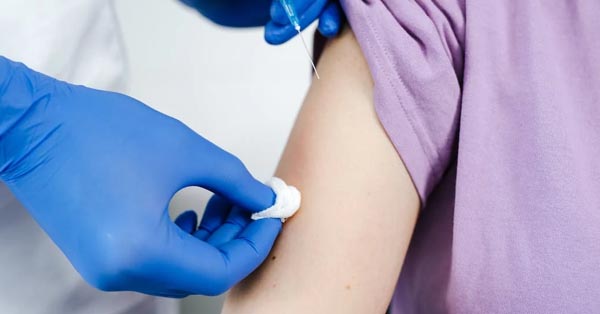Needle Phobia and Fainting
By: Dental Fear Central
Do you feel anxious at the sight of needles? There is something you can do and your dentists can help you, too! The Oral Surgery DC Team
Some people faint at the sight of needles. This may be common if you have what is called a blood-injury-injection phobia, where you get very anxious by seeing blood or an injury or by receiving an injection.
According to some sources, many people (70-80%) who have a blood-injury-injection phobia faint. But other studies have failed to find such a high incidence of fainting. For example, in one study by DeJongh and his colleages (1998), none of the people with blood-injury-injection phobia fainted during dental treatment. So it is unclear exactly how common fainting is.
Fainting is the result of a sudden drop in blood pressure. Psychologists don't know exactly why some of us experience a drop in blood pressure when we see blood or have an injection. One theory is that it's an evolutionary mechanism - back in the distant past, when someone was coming at someone else with a sharp stick, a genetic variation allowed some individuals to faint in response. Because a person who had fainted looked dead, they might have survived attacks by other warriors during battle. Also, the drop in blood pressure might have helped those who were wounded to avoid bleeding to death. Survivors then passed on the "fainting gene".
There are some techniques you and your dentist can use to prevent fainting.
What your dentist can do:
"Fainting - it does happen. I would say a handful of my patients come over faint every year. This tends to happen just after giving local anaesthetic, especially when they have not eaten. Normally, I spot the signs and lay the patient either flat or with their feet slightly raised. I cannot recall the last time a patient actually properly passed out. These days I tend to give local anaesthetic with the patient reclined (if they are ok with that) and keep a close eye on them for the next few minutes."
Lying down helps because the blood can flow to the brain more easily. It is much harder to faint when you are lying down. So if you are concerned about fainting, and don't mind lying down, ask your dentist to give you the local anaesthetic while lying down.
What you can do:
If lying down on its own isn't enough (or you hate the idea of lying down), you can learn a technique called Applied Tension. Ideally, to learn it, you would work with a therapist, because this will make it easier to get ideas for exposure exercises. But you can also learn it on your own. Read through all the instructions first before starting to practice.
Step 1: Find a comfortable place in your home where you can be alone without anyone interrupting. Sit in a comfy chair or lie down on a sofa or a bed. Focus on the muscles in your legs, arms and trunk. Now tense those muscles (make them contract). Hold the tension until you feel a warm feeling or a "rush" in your head. This usually occurs after 10 to 15 seconds. Then, relax and rest for about 30 seconds. Repeat this four more times.
Step 2: Repeat step 1 five times per day (this means doing it 25 times per day altogether). Do this everyday for one week. This may seem like a lot, but the better you get at this technique, the easier it will be when you put it to work in a stressful situation. You want to practice enough that it becomes automatic.
Don't overdo it, though. If you are getting headaches it could mean that you're tensing too hard. If this happens, do the tensing exercise less often or don't tense the muscles as hard.
Step 3: It will be very helpful for you to know the physical symptoms you experience just before you faint. These will be different for different people. You may feel
- light-headedness
- clamminess
- hot or cold flushes
- nausea
- or other symptoms (everyone is unique!)
If you can recognise the early warning signs, you can then start applied tension to reverse the fainting process and stop the faint before it happens.
Step 4: Now it's time to practice applied tension while exposing yourself to things that make you feel faint. This exposure starts with "easier" things like looking at a picture of a toy syringe or a drawing of a syringe, for example. As you master each situation, you move on to more difficult things. This is where a psychologist comes in handy, because they can help with suggestions for exposure exercises, and with creating an exposure hierarchy. An exposure hierarchy means that you have a variety of scenarios that may make you faint (these could be thinking about a situation, looking at a drawing or photo of the feared situation, watching a video, or actually doing it for real).
If you're not just practicing for dental injections, but for an injection in the arm (for example because you want to go on holiday to an exotic destination and need a vaccine), you'll need to relax the arm where the injection will be given while tensing all of the other muscles in your body. This will require some extra practice.
Resource: https://www.dentalfearcentral.org/fears/needle-phobia/fainting/






4.9 Stars
based on 134 reviews
5 Stars
based on 11 reviews
5 Stars
based on 11 ratings